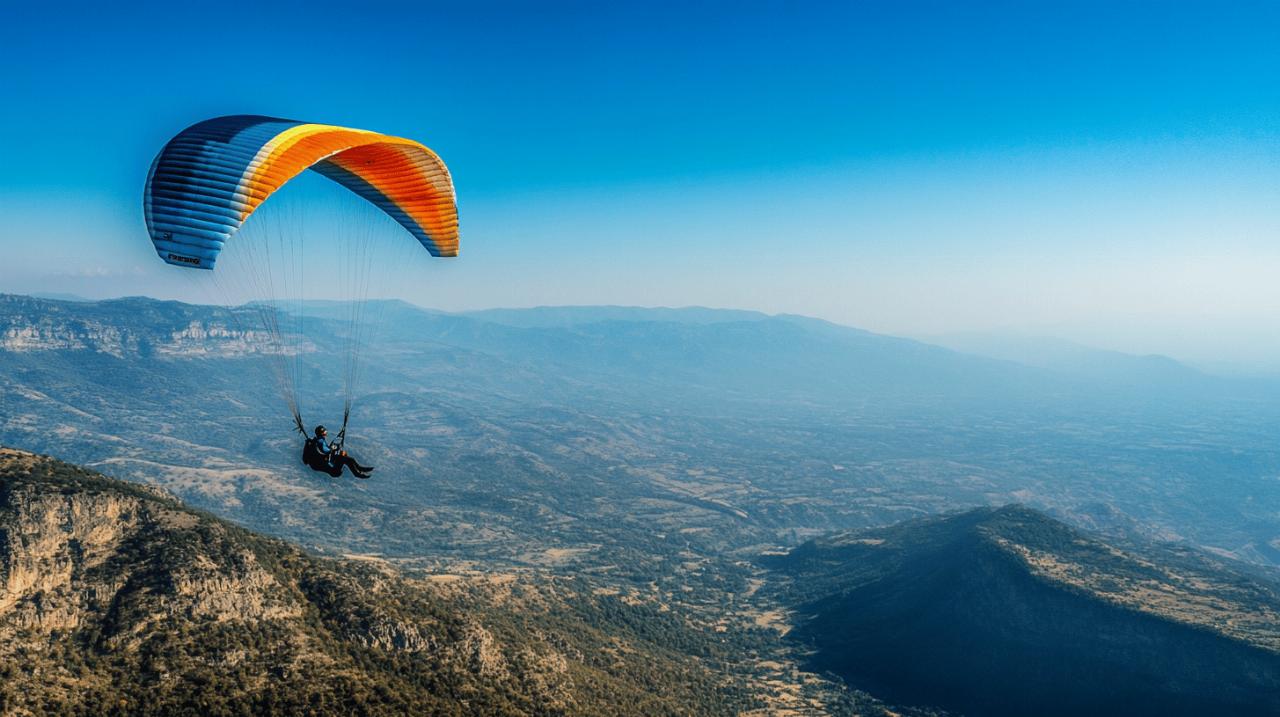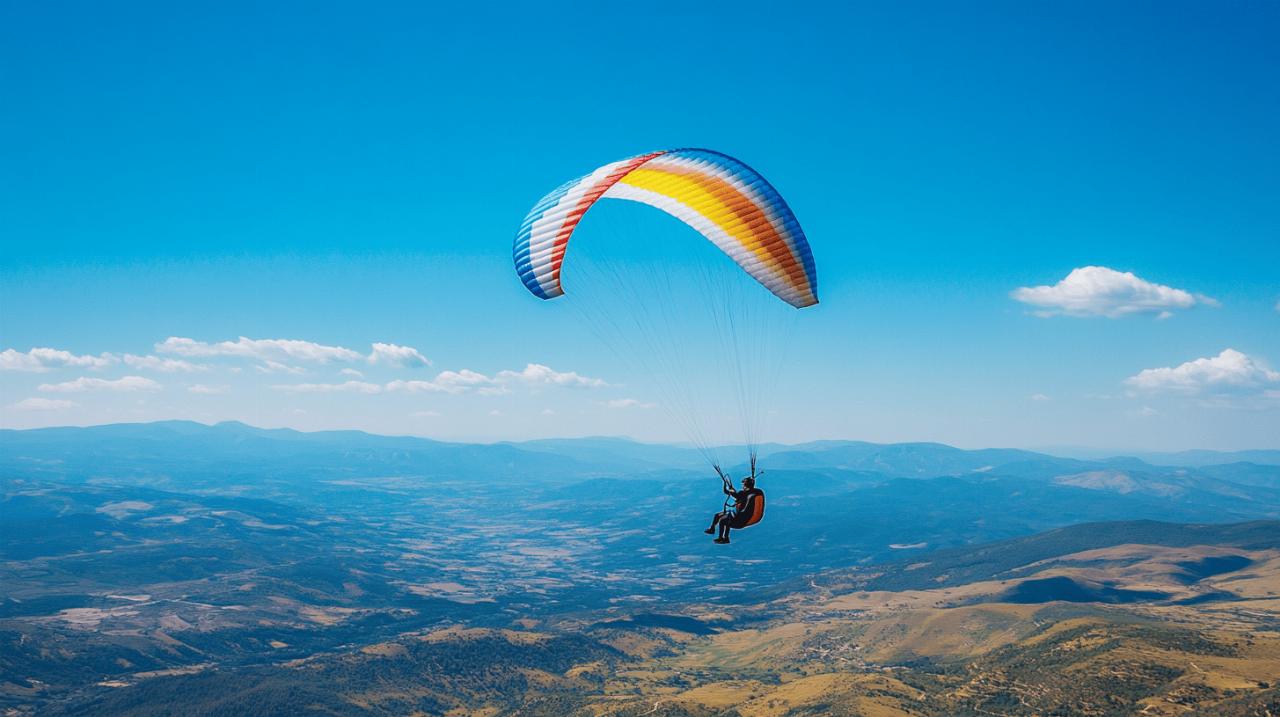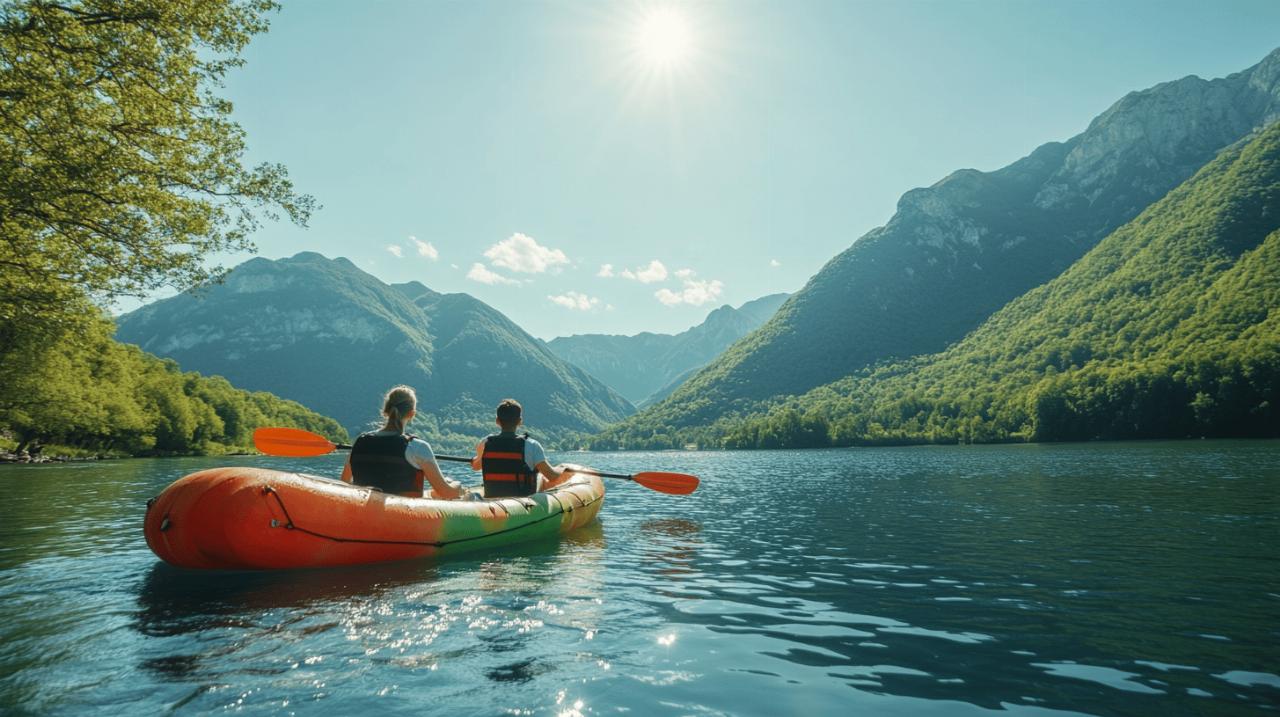Embarking on a paragliding journey offers an unparalleled sense of freedom and connection with the skies, particularly across the diverse landscapes of the United Kingdom. Before you launch yourself from a hillside and glide effortlessly above rolling valleys and coastal cliffs, understanding the essential equipment that will accompany you on every flight is absolutely critical. This knowledge not only ensures your safety but also enhances your overall experience as you transition from ground school to your first solo adventure. The right gear, chosen thoughtfully and maintained diligently, becomes your trusted companion in the air.
The wing and harness: your primary flight system
The wing and harness form the very core of your paragliding setup, functioning as the primary flight system that lifts you into the sky and keeps you comfortably suspended throughout your aerial exploration. Without a properly selected wing and a well-fitted harness, even the most skilled pilot cannot achieve the control and comfort necessary for safe and enjoyable flying. These two components must work in harmony, tailored to your body weight, skill level, and the conditions you intend to fly in. Investing time in understanding the nuances of these essential pieces will pay dividends as you progress through your training and beyond.
Selecting the Appropriate Paraglider Wing for Beginners
Choosing your first paraglider wing can feel overwhelming given the variety of models and classifications available on the market. Wings are typically categorised using the EN certification system, which ranges from EN-A through to EN-D, with EN-A representing the most forgiving and stable designs ideal for novice pilots. For those just starting their paragliding journey, an EN-A or low EN-B wing is strongly recommended, as these models offer predictable handling characteristics and are designed to dampen pilot errors and turbulent air conditions. Popular choices among beginners include the GIN Bolero 6, BGD Magic, Niviuk Koyot 4, and the Ozone Buzz Z6, all of which have earned reputations for their reliability and ease of use. As you gain experience and refine your skills, you might consider stepping up to a mid EN-B wing such as the Niviuk Hook 5, which provides a balance between safety and performance. It is crucial to select a wing that places you in the upper quarter of the manufacturer's recommended weight range, as this positioning ensures better speed, control, and overall responsiveness in the air. Brands like GIN, BGD, Niviuk, and Ozone are well-established in the industry, offering a range of options that cater to different flying styles and preferences. When purchasing, you might also explore second-hand options, which can offer substantial savings of a thousand pounds or more, though it is essential to have any used wing thoroughly inspected by a qualified professional to ensure its airworthiness. Some retailers, such as Passion Paragliding, even offer complimentary training courses when you purchase a full set of new equipment, adding further value to your investment.
Understanding harness types and comfort requirements
The harness serves as your seat in the sky, and its design directly impacts your comfort, safety, and flight performance. Harnesses come in several styles, with seated harnesses and pod harnesses being the most common. For beginners, a standard seated harness is generally the preferred option, as it provides excellent support, ease of entry and exit, and a familiar seated position that helps new pilots maintain situational awareness. Pod harnesses, which enclose the pilot's legs in a streamlined cocoon for improved aerodynamics, are better suited to more advanced pilots who fly cross-country or in colder conditions. Comfort is paramount when selecting a harness, as you will spend extended periods suspended in it, and any discomfort can quickly detract from the enjoyment of your flight. Look for models with ample padding, adjustable leg straps, and back protection to cushion against hard landings or unexpected turbulence. Popular beginner-friendly harnesses include the Skywalk Cult, GIN Gingo 4, and GIN Airlite 4, all of which have been designed with new pilots in mind. A well-chosen harness not only enhances comfort but also integrates seamlessly with your reserve parachute system, ensuring that all safety components are positioned correctly and can be deployed swiftly if needed. When trying out harnesses, take the time to simulate various positions and movements to ensure that the fit is snug yet not restrictive, and that all buckles and adjustment points are easily accessible during flight.
Critical safety equipment: helmet, reserve parachute, and communication devices
Safety in paragliding is non-negotiable, and the equipment you carry plays a vital role in protecting you from the inherent risks of the sport. Beyond the wing and harness, there are several critical pieces of safety gear that every pilot must have before taking to the skies. These items are not optional extras but rather essential components that can make the difference between a minor incident and a serious accident. Understanding the purpose and proper use of each piece of safety equipment will give you the confidence to fly with peace of mind, knowing that you are prepared for a range of scenarios.
Choosing a Certified Helmet and Reserve Parachute System
A certified helmet is your first line of defence against head injuries, whether from a rough landing, collision with terrain, or unexpected collapse in flight. When selecting a helmet, ensure it meets the EN-966 standard, which is specifically designed for paragliding and hang gliding. This certification guarantees that the helmet has been rigorously tested for impact resistance and will provide adequate protection in the event of an accident. Helmets come in various styles, from lightweight open-face designs to full-face models that offer additional protection for the chin and jaw. For beginners, an open-face helmet often strikes the right balance between protection, weight, and visibility, though the choice ultimately depends on personal preference and the type of flying you plan to undertake. A quality helmet can be found for around one hundred pounds, making it a relatively modest investment for such a crucial piece of safety gear. Equally important is the reserve parachute, a backup system that can be deployed if your main wing becomes uncontrollable or suffers a catastrophic failure. Every pilot should carry a reserve parachute, and it must be professionally packed and inspected annually to ensure it functions correctly when needed. After ten years, a reserve parachute should be replaced entirely, as the materials can degrade over time. The cost of a new reserve parachute is approximately five hundred pounds, and this expense should be factored into your overall equipment budget. When purchasing a reserve, ensure it is compatible with your harness and that you are thoroughly trained in its deployment procedure, as hesitation or incorrect deployment can render the system ineffective in an emergency.
Radio communication and emergency signalling kit
Communication devices, while not strictly essential for beginners, are highly recommended as you progress in your paragliding journey. A two-way radio allows you to stay in contact with fellow pilots, receive updates on weather conditions, and call for assistance if you find yourself in difficulty. Radios are particularly useful during training, as your instructor can provide real-time guidance and feedback while you are in the air. When selecting a radio, look for models that are lightweight, have a long battery life, and operate on frequencies approved for paragliding use in the United Kingdom. In addition to a radio, consider carrying a basic emergency signalling kit, which might include a whistle, a small mirror for signalling, and a mobile phone in a waterproof pouch. These items take up minimal space and weight but can prove invaluable if you land in a remote area or need to attract attention after an unexpected landing. Some pilots also carry a GPS tracker or personal locator beacon, which can transmit your position to emergency services if you are injured or unable to move. While these devices add to your overall equipment costs, they provide an extra layer of security and are well worth considering, especially if you plan to fly in isolated or mountainous regions.
Flight Instruments and Navigation Tools for New Pilots
 As you gain experience and begin to explore more ambitious flights, you will find that flight instruments and navigation tools become increasingly valuable. These devices provide real-time data on your altitude, rate of climb or descent, and position, helping you make informed decisions and optimise your flight path. While not essential for your very first flights, they quickly become indispensable as you progress beyond basic circuits and start to venture further afield. Understanding how to use these instruments effectively is a key part of developing your skills as a competent and confident pilot.
As you gain experience and begin to explore more ambitious flights, you will find that flight instruments and navigation tools become increasingly valuable. These devices provide real-time data on your altitude, rate of climb or descent, and position, helping you make informed decisions and optimise your flight path. While not essential for your very first flights, they quickly become indispensable as you progress beyond basic circuits and start to venture further afield. Understanding how to use these instruments effectively is a key part of developing your skills as a competent and confident pilot.
Variometers and altitude measurement devices
A variometer, often referred to as a vario, is an instrument that measures your vertical speed, indicating whether you are climbing, descending, or maintaining level flight. This information is crucial when flying in thermals, as it allows you to identify and stay within rising air, maximising your altitude gain and extending your flight time. Variometers emit audio signals that change in pitch and frequency depending on your rate of ascent or descent, providing instant feedback without the need to constantly glance at a screen. For beginners, a simple vario with basic audio feedback is sufficient, but as you progress, you may want to upgrade to a more advanced alti-vario, which combines variometer functionality with an altimeter to give you a complete picture of your vertical position and movement. These devices can range in price from a couple of hundred pounds for a basic model to over a thousand pounds for a high-end unit with GPS integration and advanced flight planning features. When choosing a vario, consider factors such as ease of use, screen visibility in bright sunlight, battery life, and the quality of the audio feedback, as these will all affect your experience in the air.
Gps navigation systems and weather monitoring equipment
GPS navigation systems have revolutionised paragliding, enabling pilots to plan routes, track their flights, and share their adventures with others. Modern GPS devices designed for paragliding often include detailed topographic maps, airspace warnings, and the ability to mark waypoints and plan cross-country routes. Many pilots now use smartphone apps in conjunction with dedicated GPS units, as these apps offer a cost-effective way to access navigation features and can be paired with external sensors for improved accuracy. However, it is important to remember that smartphones can be susceptible to cold temperatures and battery drain, so having a dedicated GPS unit as a backup is advisable. In addition to navigation, monitoring weather conditions is a critical aspect of safe flying. While weather forecasting is typically done on the ground before you launch, some advanced pilots carry portable weather monitoring devices that can measure temperature, humidity, and barometric pressure in real time. These devices are more relevant for experienced pilots undertaking long cross-country flights, but understanding how to interpret weather data and recognise changing conditions is a skill that all pilots should develop from the outset. A simple compass, often overlooked in the age of GPS, remains an essential piece of equipment, as it provides a reliable backup for navigation if your electronic devices fail or run out of battery.
Clothing and Accessories for British Weather Conditions
The unpredictable and often challenging weather conditions found across the United Kingdom demand careful consideration when selecting clothing and accessories for paragliding. Flying at altitude exposes you to colder temperatures, stronger winds, and rapidly changing conditions, and dressing appropriately is essential for both comfort and safety. The right clothing not only keeps you warm and dry but also allows you to move freely and operate your equipment without hindrance. Building a versatile wardrobe of flying gear that can adapt to the variable British climate will ensure you are prepared for whatever the skies throw at you.
Layering Systems and Protective Clothing for Variable Climates
Layering is the key to staying comfortable in the air, as it allows you to adjust your insulation in response to changing temperatures and activity levels. Start with a moisture-wicking base layer that draws sweat away from your skin, preventing you from becoming chilled once you are airborne. Over this, add an insulating mid-layer such as a fleece or lightweight down jacket, which traps warm air and provides essential warmth at altitude. Finally, your outer layer should be a windproof and waterproof shell that protects you from the elements while remaining breathable to prevent overheating. Look for jackets and trousers that are designed for high-mobility activities, with articulated knees and elbows, adjustable cuffs, and ample pockets for storing essential items such as gloves, a compass, and a radio. Bright colours or reflective elements on your clothing can also improve your visibility to other pilots and ground crew, which is an important safety consideration. In colder months or when flying at higher altitudes, consider adding extra insulation layers or even a heated vest, which can be powered by a small battery pack and provides targeted warmth to your core. Remember that conditions on the ground can be deceptively mild, but temperatures drop significantly as you gain altitude, so always dress for the coldest part of your flight rather than the conditions at launch.
Footwear, Gloves, and Additional Accessories for Safe Flying
Proper footwear is essential for both the take-off and landing phases of your flight, as well as for the often rugged terrain you will encounter at launch sites. Sturdy boots with good ankle support, a grippy sole, and waterproof construction are the ideal choice, as they provide stability on uneven ground and protect your feet during landings, which can sometimes be harder than anticipated. Avoid lightweight trainers or shoes with smooth soles, as these offer little protection and can increase the risk of ankle injuries. Gloves are another critical accessory, serving multiple purposes throughout your flight. They protect your hands from abrasion when handling lines and carabiners, provide insulation against the cold, and improve your grip on control handles and instruments. Look for gloves that offer a good balance between warmth, dexterity, and durability, as you need to be able to operate zips, buckles, and other equipment without removing them. Some pilots prefer fingerless gloves in warmer conditions, as they allow for greater sensitivity and control, but full-finger gloves are generally more versatile and suitable for the British climate. Additional accessories to consider include a neck gaiter or buff to protect against wind chill, sunglasses with UV protection to shield your eyes from glare at altitude, and a small rucksack or stuff sack to carry essentials such as water, snacks, a first aid kit, and spare layers. These items may seem minor, but they contribute significantly to your overall comfort and preparedness, allowing you to focus on the joy of flying rather than being distracted by discomfort or inadequate gear.





